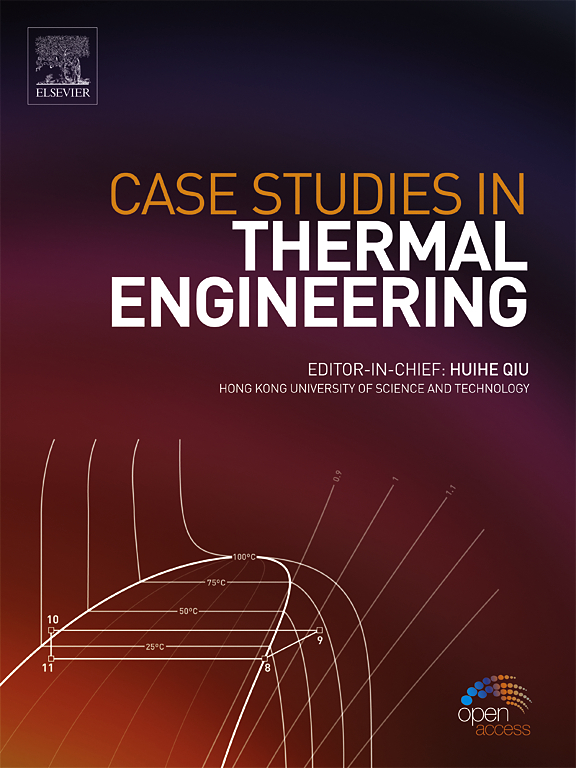High spatiotemporal resolution optical measurements of two-stage ignition and combustion in Engine Combustion Network Spray D flames
IF 6.4
2区 工程技术
Q1 THERMODYNAMICS
引用次数: 0
Abstract
This study explores flame structures and combustion dynamics in high-pressure n-dodecane fuel sprays, focusing on the formation and consumption of formaldehyde (CH2O) during autoignition and the development of poly-aromatic hydrocarbons (PAH) as soot precursors. These processes are crucial for optimizing combustion efficiency and reducing emissions. However, traditional approaches, which rely on single-shot measurements or ensemble-averaged visualizations, often overlook critical early-stage processes during low-temperature ignition. To overcome these challenges, we employed an innovative high-speed planar laser-induced fluorescence (PLIF) technique at 50 kHz using a pulse-burst Nd:YAG laser system with an excitation wavelength of 355 nm. This approach, applied for the first time to Engine Combustion Network (ECN) Spray D flames, provides unprecedented insights into the combustion processes at varying ambient temperatures and oxygen concentrations. Additionally, simultaneous high-speed schlieren imaging at 100 kHz was used to visualize spray penetration, first-stage ignition, and thermal expansion zones. Our findings reveal that, similar to Spray A flames, CH2O forms in cold, fuel-rich zones well upstream of the combustion zone. However, in Spray D flames, the schlieren signal softening observed in the jet's head does not lead to complete disappearance, and the CH2O signal is absent from the full head of the spray. During the second-stage ignition, CH2O consumption accelerates due to high-temperature reactions, leading to a significant reduction in its signal. Unlike the mushroom-shaped structure seen in Spray A flames, Spray D flames exhibit a quasi-steady PAH phase structure, with lean peripheral mixtures insufficient for soot precursor formation. Notably, reducing ambient oxygen concentration to 13 % while maintaining or increasing temperature prolongs the presence of CH2O, highlighting its influence on ignition dynamics and oxidation processes in dodecane spray flames. This study provides new insights into the combustion mechanisms of high-pressure sprays and offers valuable data for developing next-generation combustion technologies, including models, aimed at improving efficiency and reducing emissions.
发动机燃烧网络喷射 D 型火焰两级点火和燃烧的高时空分辨率光学测量结果
本研究探讨了高压正十二烷燃料喷雾中的火焰结构和燃烧动力学,重点是自燃过程中甲醛(CH2O)的形成和消耗,以及作为烟尘前体的多芳烃(PAH)的发展。这些过程对于优化燃烧效率和减少排放至关重要。然而,依靠单次测量或集合平均可视化的传统方法往往会忽略低温点火过程中关键的早期阶段过程。为了克服这些挑战,我们采用了一种创新的高速平面激光诱导荧光(PLIF)技术,使用波长为 355 nm 的脉冲串 Nd:YAG 激光系统,频率为 50 kHz。这种方法首次应用于发动机燃烧网络(ECN)喷射 D 型火焰,为了解不同环境温度和氧气浓度下的燃烧过程提供了前所未有的见解。此外,我们还使用 100 kHz 的同步高速裂片成像技术来观察喷雾穿透、第一阶段点火和热膨胀区。我们的研究结果表明,与喷雾 A 火焰类似,CH2O 在燃烧区上游富含燃料的冷区形成。然而,在喷射 D 型火焰中,在喷射头部观察到的裂片信号软化现象并没有完全消失,整个喷射头部都没有 CH2O 信号。在第二阶段点火过程中,由于高温反应,CH2O 消耗加快,导致其信号显著减弱。与喷射火焰 A 中的蘑菇状结构不同,喷射火焰 D 显示出准稳定的多环芳烃相结构,其贫化的外围混合物不足以形成烟尘前体。值得注意的是,在保持或提高温度的同时将环境氧气浓度降低到 13% 会延长 CH2O 的存在时间,从而突出其对十二烷喷射火焰的点火动力学和氧化过程的影响。这项研究为高压喷雾的燃烧机理提供了新的见解,并为开发下一代燃烧技术(包括模型)提供了宝贵的数据,这些技术旨在提高效率和减少排放。
本文章由计算机程序翻译,如有差异,请以英文原文为准。
求助全文
约1分钟内获得全文
求助全文
来源期刊

Case Studies in Thermal Engineering
Chemical Engineering-Fluid Flow and Transfer Processes
CiteScore
8.60
自引率
11.80%
发文量
812
审稿时长
76 days
期刊介绍:
Case Studies in Thermal Engineering provides a forum for the rapid publication of short, structured Case Studies in Thermal Engineering and related Short Communications. It provides an essential compendium of case studies for researchers and practitioners in the field of thermal engineering and others who are interested in aspects of thermal engineering cases that could affect other engineering processes. The journal not only publishes new and novel case studies, but also provides a forum for the publication of high quality descriptions of classic thermal engineering problems. The scope of the journal includes case studies of thermal engineering problems in components, devices and systems using existing experimental and numerical techniques in the areas of mechanical, aerospace, chemical, medical, thermal management for electronics, heat exchangers, regeneration, solar thermal energy, thermal storage, building energy conservation, and power generation. Case studies of thermal problems in other areas will also be considered.
 求助内容:
求助内容: 应助结果提醒方式:
应助结果提醒方式:


